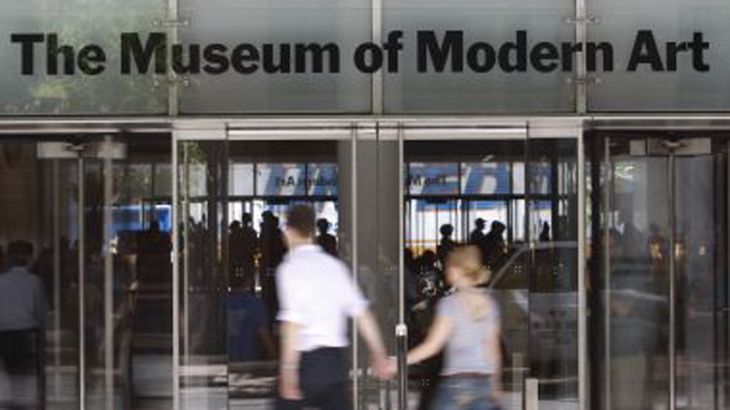World’s first emojis on display at New York’s MoMA
New York art museum displays 176 original emojis seen as way of “bridging communication gaps” between different communities.

New York City – You don’t need to be an art connoisseur to appreciate New York’s Museum of Modern Art.
A must-do on every city travel guide, the museum is filled with tourists and locals alike – all excited about getting a glimpse of masterpieces that have defined art in the 20th century.
Keep reading
list of 4 itemsInside the pressures facing Quebec’s billion-dollar maple syrup industry
‘Accepted in both [worlds]’: Indonesia’s Chinese Muslims prepare for Eid
Photos: Mexico, US, Canada mesmerised by rare total solar eclipse
Still, patrons waiting in line to buy a ticket are often surprised to see what greets them – a colourful and animated display of familiar-looking pixelated symbols.
They are the 176 original emojis designed by the Japanese telecom behemoth NTT Docomo in 1999 and recently acquired by the museum’s Department of Architecture and Design.
“I really like it, but apparently they don’t have the 💩 I use all the time nowadays,” quipped one young woman as she typed away on her smartphone.
‘Tremendous masterpieces’
Paul Galloway, the Collection Specialist for the Department, is convinced the original emojis belong in the museum. He says: “We feel these are a tremendous masterpiece of design that really belong here in the museum.”
Designed by Shigetaka Kurita, then a member of the team that launched the world’s first major mobile internet service, the 12×12 pictorials, which include a martini glass, a lit bulb and a red-heeled ladies’ shoe, are the forefathers of the modern-day emojis.
Earning a place alongside the likes of Van Gogh, Andy Warhol, Henri Matisse and Pablo Picasso is a big 👍 to their contribution to the evolution of technology and human communication.
Galloway believes that emojis have not only expanded the Western alphabet beyond 26 characters but also helped us reassert a human touch [quality] in the cold space of electronic communication.
“If you think about art reaching a broad swath of humanity, it’s hard to think of any form of art that has reached more people than emojis. Far more reach than most artists or designers can hope for.”
An estimated 92 percent of people online use emojis today. First popular in Japan, those little smiley faces took off globally when iPhone brought them to the mainstream in 2011.
In 2015, the 😂 was crowned as Oxford Dictionary’s Word of the Year.
Globalisation of emojis
The globalisation of emojis has in many ways bridged communication gaps between communities while at the same time acknowledging their diversity.
“Emojis are a form of creative expression,” says Paola Antonelle, MoMA’s senior curator and director of research and development.
“They have become an uber meta language because we don’t even need to speak the same language to send each other an emoji.”
The integration of mixed-race families, different skin tones and same-sex couples by Apple last April really allows users to make a statement. Jerry Johnson, a Mumbai-based LGBT activist, says he enjoys using the dark skin colour tones to stick a thumb to the societal preference of light skin.
“Indian culture has regressed tremendously by retaining old Victorian law against same-sex intercourse,” he says.
“The emojis in virtual space accord us more freedom of expression than reality.”
Jewish and Muslim emojis
Fifty-one new emojis are expected to hit the screens next year. They include characters with beards, breast-feeding and even wearing hijabs.
Rana Abdelhamid, a student at Harvard’s Kennedy School and founder of the International Muslim Women’s Initiative for Self-Empowerment in New York, says she is excited to use the new set.
“My friend and I would always talk about creating Jewish and Muslim women emojis,” Abdelhamid says.
“It’s not just about being represented but also about creating visibility for hijab-wearing women online. Given that so much interaction happens virtually, this is more important than before.”
The 176 original emojis will bedeck the entrance of the MoMA until March 2017.